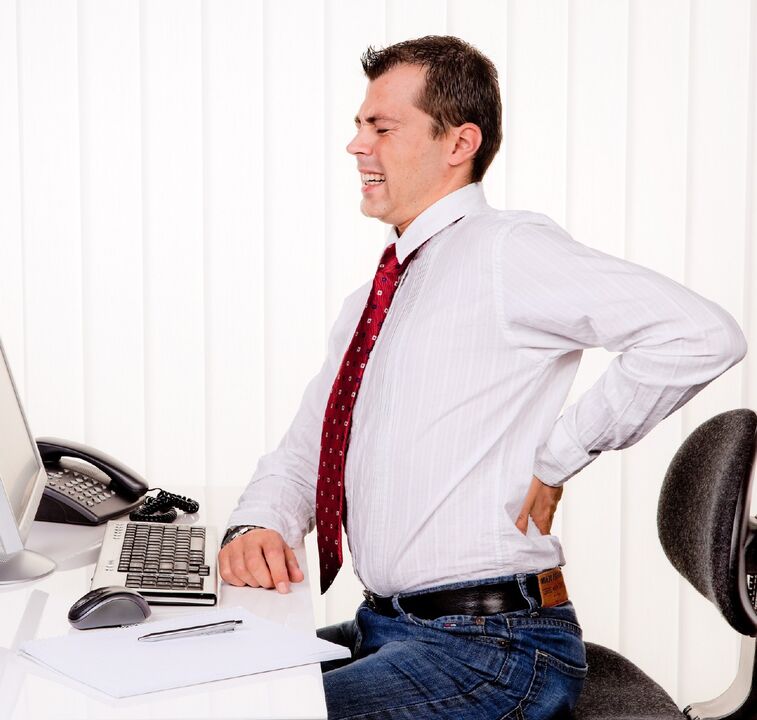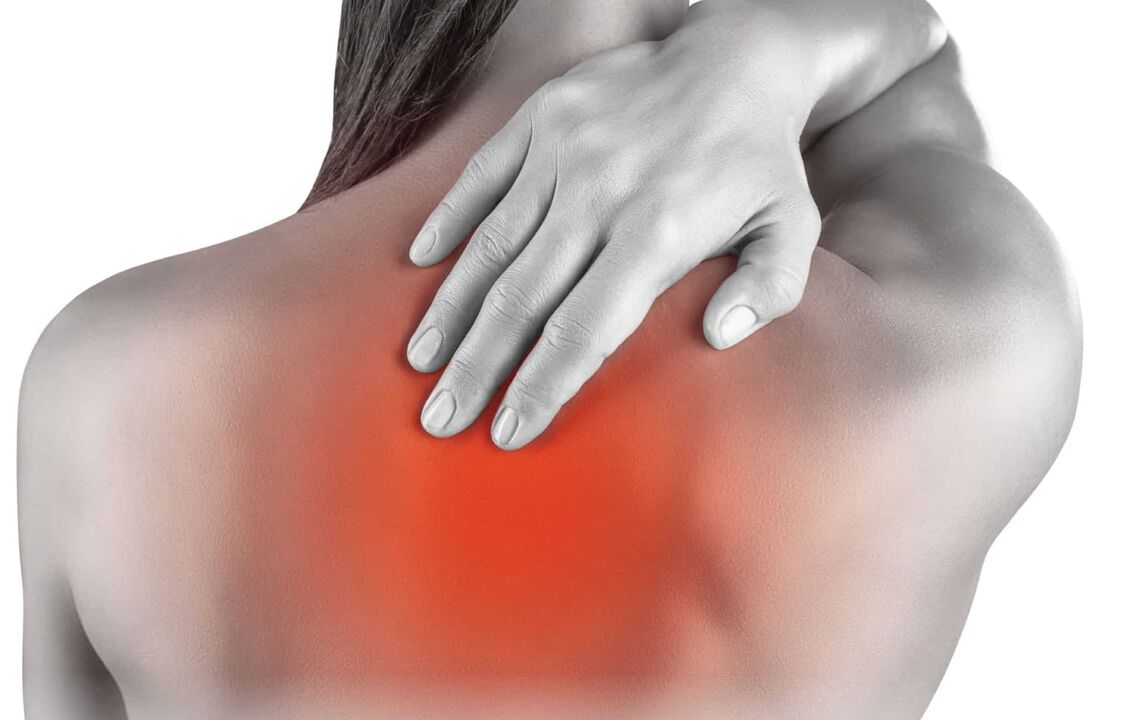
What it is: osteonecrosis is a disease of the spine in which the discs (and subsequently the vertebral bodies, joints, and ligaments) lose their ability to function properly. Until recently, the disease was considered age-related, but over the past decades it has become significantly younger and mercilessly affects young people between the ages of 18 and 30.
Osteochondrosis is usually classified by its location - lumbar, cervical, thoracic, sacral, and widespread. More than 50% of cases accounted for degenerative lumbar spine; The symptoms, treatment and diagnosis of this type of degenerative bone disease are widely described in the works of medical scientists. A quarter of diagnosed cases are due to cervical osteoma - a disease of office workers and people with sedentary lifestyles.
Usually, the pathological processes in this disease first affect the bones and ligaments. We often find out that the disease has already begun when complications arise - pain, sensory disturbances, muscle atrophy, disorders of internal organs.
Today we will talk about osteonecrosis, the symptoms and treatment of this disease that is a very topical issue in our time. After all, between 40 and 90% of the world's population has the disease. Usually, the disease affects people over the age of 30.
Cause it happened
There is no single reason for the development of osteonecrosis. Some believe that the disease occurs due to the deposition of calcium compounds that are not absorbed by the bone tissue due to a decrease in the blood supply of the bones caused by weakness, curvature of the spine, and decreased space between the vertebrae. single.
There are many predisposing causal factors. The main things are as follows:
- spinal injuries (fractures, bruises, dislocations);
- genetic predisposition;
- foot diseases that overload the spine - these include flatfoot, clubfoot (varus deformity of the foot), ringworm;
- wearing tight, uncomfortable shoes for a long time (also puts strain on the spine);
- overweight obesity;
- sedentary lifestyle;
- metabolic disorder;
- Scoliosis (curvature of the spine, scoliosis, scoliosis);
- Pro features - lift weights, rotate and jerk your body frequently, work in uncomfortable body postures.
The development of the disease is facilitated by genetic factors, overload of the spine (overweight, heavy lifting), trauma and minor trauma.
Stages of osteonecrosis
According to the degree of development of osteonecrosis and its symptoms, there are four stages.
- First stage- preclinical, extremely rarely diagnosed due to mild (or completely absent) signs of disease. At this stage, changes in the spine are minimal. The patient is worried about limited pain in the spine, and there is tension in the back muscles.
- In the second stagepain occurs, since the fibrous annular of the disc is destroyed, the fixation of the vertebrae between them is disturbed, their pathological mobility arises in the form of displacement. The distance between the discs is reduced, due to compression of the nerve endings, blood vessels, and lymphatic vessels.
- The third stage. . . A rupture is formed in the cartilaginous tissues of the annulus fibers, through which part of the more fluid nucleus percolates - a herniated disc is formed. Such changes are most commonly found in the lumbar and cervical spine. To a lesser extent, the occurrence of herniated discs is more likely in the thoracic region as a result of disc pathology, a certain part of the load will be assumed by the ribs and sternum. The consequence of protrusion (herniation) of the disc, which affects the roots of the spinal nerves, manifests itself in the form of pain, inflammation, impaired conduction of nerve fibers and inflammation.
- Fourth stage- finally, in which scar tissue is replaced by fibers of the intervertebral disc, as well as fibrocartilage and fibrous tissue of the nucleus pulposus.
In order to prevent the development of the terminal stage, it is necessary to decide how to treat osteonecrosis in a timely manner.

Symptoms of osteonecrosis
Osteochondrosis is a chronic disease characterized by alternating periods of symptom exacerbation and remission. Excessive exercise, fatigue, hypothermia, trauma, shaking, and vibration may contribute to acute symptoms.
The disease manifests itself in a number of typical symptoms. Spinal osteosarcoma presents with: back pain, numbness in the affected spine, reduced range of motion, pain that increases when lifting weights, sudden movements, straining when coughing or sneezing.
Chronic pain, which is one of the symptoms of osteoarthritis of the spine, causes increased fatigue. When the nerve roots are compressed by the discs of the spine, the pain can be more intense and of a "shooting" nature. Its localization in this case is not limited to the dorsal region, but is felt by a person in the area of \u200b\u200bthe extremities.
With osteonecrosis, the patient describes symptoms such as:
- paroxysmal or sharp pain in the spine affected by osteonecrosis;
- pain increases after exertion, as well as in the morning;
- pain that may spread to the neck, arms, or legs, as well as the chest;
- crunchy feeling when twisting.
The disease begins and develops gradually, so the treatment of spinal tumors will depend on the stage, as well as the location of the damage to the vertebrae.
Treatment of osteonecrosis
In the case of osteonecrosis, the treatment requires complex measures.
In the acute phase, strict bed rest is required, rigid immobilization of the damaged vertebrae is required with a special corset or collar. The bed should be firm, use a shield, and limit movement.
For pain relief, analgesics, B vitamins, novocaine blockade, non-steroidal anti-inflammatory drugs, ointments, mustard application, ultraviolet irradiation, acupuncture and acupressure, heat procedures, wool belts can be used. , v. v. can be used.
The next phase of treatment is aimed at improving local blood circulation and strengthening the muscles that support the spine. To cure osteonecrosis, you must adhere to complex therapy, which includes:
- medical massage (traditional, hardware, vacuum);
- physiotherapy exercises, swimming;
- physical therapy (laser treatment, ultrasound, low-frequency current, magnetic field; shock wave therapy, cryotherapy);
- acupressure (acupuncture, acupressure);
- pull the spine (dry or water);
- non-traditional therapeutic methods (treatment with bee stings);
- treatment with folk remedies (herbs, honey, mustard, red pepper, bath).
If conservative treatment is unsuccessful or changes in the disc necessitate external intervention, modern minimally invasive surgical methods are used: laser resurfacing, intradisc electrotherapeutic therapy. buffer, remove the hernia by microsurgery.
In cases where this cannot be changed, a metal or metal-and-plastic artificial disc can be fitted. So now let's take a closer look at how to treat osteonecrosis without the use of drugs.
Massage
Massaging the back with osteolysis has a much more pronounced effect than with exercise therapy. First and foremost, any treatment should aim to relieve pain.
When the pain can be relieved or relieved, then real treatment can begin. But its main task can be called to prevent the progression of the disease, as well as possible subsequent relapses. For these purposes two main methods are used - gymnastics and massage. It is worth noting that in the case of the neck, exercise is not as effective as massage.
Review for yourself: massage improves blood circulation in the affected area, eliminates spasms of the muscles of the neck and back, weakens or eliminates pain, strengthens the muscles of the neck.
Acupuncture
Acupuncture is widely used in the treatment of osteonecrosis. Acupuncture helps relieve pain, relax back muscles, restore damaged tissues by stimulating metabolism.
In some cases, acupuncture can replace traditional drug therapy, the disadvantages of this method are well known (drug side effects, addiction). Acupuncture is contraindicated for skin diseases affecting the back and during pregnancy.
Exercise therapy for osteonecrosis
Healing exercises for people with diseases such as osteonecrosis should become a necessary part of life. It is exercise therapy capable of breaking the vicious circle, including the following components: inactivity, weakening of back and neck muscles, disc damage, bed rest.
Before starting to perform exercises, you should know the main principles of therapeutic exercises for osteonecrosis:
- Exercises should not be performed at an aggravation of the disease, when there is a severe pain syndrome.
- Exercise should not increase pain.
- The back stretch complex should alternate with the relaxation complex.
- All exercises are performed rhythmically, without sudden movements, maintaining the correct posture of the body.
For each type of osteonecrosis, individual exercise combinations have been developed. However, to prevent the spread of the disease, it is advisable to train the musculature of the entire spine.

























